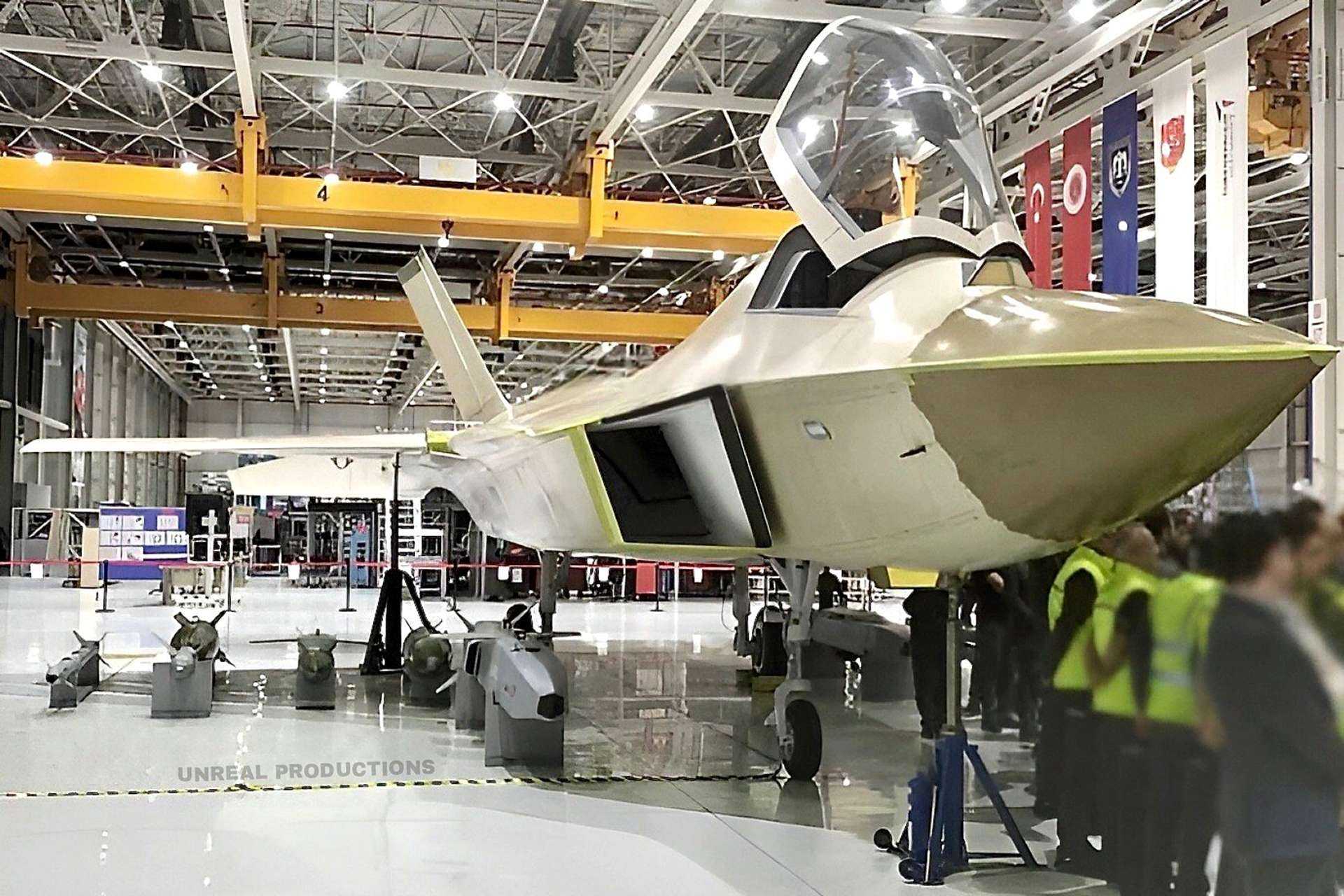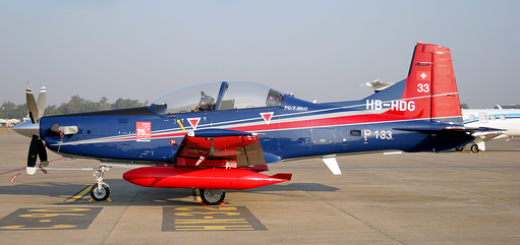Exclusive: Türkiye’s KAAN Stealth Fighter to Receive New Design and Enter Expanded Testing Phase

{loadposition bannertop}
{loadposition sidebarpub}
On May 7, 2025, during Teknofest 2025, Turkish Aerospace Industries (TAI) announced a new phase for its indigenous stealth fighter program, KAAN. CEO of TAI, Mehmet Demiroğlu, revealed that the second prototype is currently under construction and will feature notable changes to its airframe, including reshaped air intakes and structural enhancements. The prototype is expected to be completed before the end of the year, marking a significant step in Türkiye’s ambition to independently field a fifth-generation combat aircraft.Follow Army Recognition on Google News at this link
The KAAN, a twin-engine stealth multirole aircraft, is designed for a wide spectrum of missions including air superiority, precision strike, and integration within network-centric warfare environments. (Picture source: TAI)
While the updated design remains undisclosed to avoid premature interpretations, TAI confirmed its intention to refine the aircraft’s profile for greater efficiency and reduced radar visibility. These developments reaffirm Türkiye’s determination to maintain momentum on the KAAN program following its removal from the F-35 project, positioning the fighter as both a national symbol and a practical solution for next-generation air dominance.
KAAN, a twin-engine stealth multirole aircraft, is designed for a wide spectrum of missions including air superiority, precision strike, and integration within network-centric warfare environments. It currently utilizes two General Electric F110-GE-129 engines, which have successfully undergone ground-based afterburner testing. Future prototypes will continue using this configuration, but Türkiye has set a long-term goal to transition to a domestically produced powerplant, the TEI-developed engine, by 2032. This shift aims to enhance performance while reinforcing national control over critical technologies.
Speaking to Aviation Week, Mehmet Demiroğlu, CEO of TAI, elaborated on the upcoming test phase. He explained that the first prototype, known as P0, served mainly to prove the aircraft could be built and flown. In contrast, the next three units, P1, P2, and P3, will undergo an intensive flight test schedule designed to push operational boundaries in terms of altitude, duration, and frequency. These iterations will play a pivotal role in verifying aerodynamic behavior and system reliability under dynamic conditions. Further down the line, prototypes P4 through P6 will bring the platform closer to its intended production configuration, incorporating avionics integration and refinements in both weight and airflow efficiency.
An essential part of the avionics testing process has been delegated to a flying testbed based on the Bombardier Global 6000 business jet. This airborne laboratory is being used to evaluate KAAN’s advanced AESA radar suite, the MURAD 600-A. This sensor, previously designated as BÜRFİS, is set to surpass the capabilities of the MURAD 100-A currently used in the F-16 and Akıncı UCAV. Designed for multifunctionality, the radar will support air-to-air and air-to-ground targeting as well as electronic warfare tasks. The use of a dedicated aircraft for testing allows engineers to collect detailed performance data under realistic flight conditions, an approach also used by the U.S. in the F-35 development process.
Complementary efforts are also underway to ensure KAAN’s integration into a broader ecosystem of manned-unmanned teaming (MUM-T). Laboratory work continues on the OKU system, TUSAŞ’s framework for enabling collaborative missions between KAAN and a suite of unmanned platforms. These include the Anka-III for strike missions, the Süper Şimşek as a compact support UAV, and Baykar’s Kızılelma for air-to-air operations.
Demiroğlu noted that despite KAAN’s stealth profile, it is not intended to be exposed to the most dangerous mission profiles directly. Instead, autonomous systems will often be tasked with high-risk operations, preserving KAAN’s survivability and allowing it to function as a mission coordinator from relative safety. This operational philosophy mirrors the approach adopted by the United States for its sixth-generation fighter initiatives, particularly under the Collaborative Combat Aircraft (CCA) program, which envisions manned platforms coordinating a suite of unmanned systems to perform critical tasks in contested environments. By integrating manned-unmanned teaming from the outset, the KAAN program aligns with emerging doctrines in future air combat that prioritize distributed lethality and survivable command nodes.
The KAAN program was launched following Türkiye’s strategic pivot in the 2010s, particularly after its exclusion from the F-35 program due to the acquisition of the Russian S-400 system. Since its maiden flight in February 2024 and a subsequent sortie in May 2024, the aircraft has entered a phase of iterative development focused on refining key technologies. According to TAI, the validation of its flight control systems, propulsion configuration, and structural integrity is paving the way for sustained prototype testing.
In terms of market prospects, the KAAN has attracted attention from countries such as Pakistan, Azerbaijan, and possibly Saudi Arabia. While no formal agreements have been signed, the program’s strategic and industrial significance is considerable. With an estimated budget of $10–12 billion, KAAN stands as one of the most ambitious defense projects in Turkish history, competing with comparable efforts like South Korea’s KF-21 and India’s AMCA. However, Türkiye’s focus remains on operational readiness and defense autonomy rather than direct commercial rivalry.
TAI’s announcement at Teknofest 2025 signals an evolution in the KAAN program, with concrete steps toward system maturity and a clear vision for long-term independence in aerospace technology. As additional prototypes take shape, avionics are refined, and cooperative combat capabilities are integrated, KAAN continues to represent not only Türkiye’s future fighter but a broader redefinition of its role in regional and global airpower dynamics.

{loadposition bannertop}
{loadposition sidebarpub}
On May 7, 2025, during Teknofest 2025, Turkish Aerospace Industries (TAI) announced a new phase for its indigenous stealth fighter program, KAAN. CEO of TAI, Mehmet Demiroğlu, revealed that the second prototype is currently under construction and will feature notable changes to its airframe, including reshaped air intakes and structural enhancements. The prototype is expected to be completed before the end of the year, marking a significant step in Türkiye’s ambition to independently field a fifth-generation combat aircraft.
Follow Army Recognition on Google News at this link
The KAAN, a twin-engine stealth multirole aircraft, is designed for a wide spectrum of missions including air superiority, precision strike, and integration within network-centric warfare environments. (Picture source: TAI)
While the updated design remains undisclosed to avoid premature interpretations, TAI confirmed its intention to refine the aircraft’s profile for greater efficiency and reduced radar visibility. These developments reaffirm Türkiye’s determination to maintain momentum on the KAAN program following its removal from the F-35 project, positioning the fighter as both a national symbol and a practical solution for next-generation air dominance.
KAAN, a twin-engine stealth multirole aircraft, is designed for a wide spectrum of missions including air superiority, precision strike, and integration within network-centric warfare environments. It currently utilizes two General Electric F110-GE-129 engines, which have successfully undergone ground-based afterburner testing. Future prototypes will continue using this configuration, but Türkiye has set a long-term goal to transition to a domestically produced powerplant, the TEI-developed engine, by 2032. This shift aims to enhance performance while reinforcing national control over critical technologies.
Speaking to Aviation Week, Mehmet Demiroğlu, CEO of TAI, elaborated on the upcoming test phase. He explained that the first prototype, known as P0, served mainly to prove the aircraft could be built and flown. In contrast, the next three units, P1, P2, and P3, will undergo an intensive flight test schedule designed to push operational boundaries in terms of altitude, duration, and frequency. These iterations will play a pivotal role in verifying aerodynamic behavior and system reliability under dynamic conditions. Further down the line, prototypes P4 through P6 will bring the platform closer to its intended production configuration, incorporating avionics integration and refinements in both weight and airflow efficiency.
An essential part of the avionics testing process has been delegated to a flying testbed based on the Bombardier Global 6000 business jet. This airborne laboratory is being used to evaluate KAAN’s advanced AESA radar suite, the MURAD 600-A. This sensor, previously designated as BÜRFİS, is set to surpass the capabilities of the MURAD 100-A currently used in the F-16 and Akıncı UCAV. Designed for multifunctionality, the radar will support air-to-air and air-to-ground targeting as well as electronic warfare tasks. The use of a dedicated aircraft for testing allows engineers to collect detailed performance data under realistic flight conditions, an approach also used by the U.S. in the F-35 development process.
Complementary efforts are also underway to ensure KAAN’s integration into a broader ecosystem of manned-unmanned teaming (MUM-T). Laboratory work continues on the OKU system, TUSAŞ’s framework for enabling collaborative missions between KAAN and a suite of unmanned platforms. These include the Anka-III for strike missions, the Süper Şimşek as a compact support UAV, and Baykar’s Kızılelma for air-to-air operations.
Demiroğlu noted that despite KAAN’s stealth profile, it is not intended to be exposed to the most dangerous mission profiles directly. Instead, autonomous systems will often be tasked with high-risk operations, preserving KAAN’s survivability and allowing it to function as a mission coordinator from relative safety. This operational philosophy mirrors the approach adopted by the United States for its sixth-generation fighter initiatives, particularly under the Collaborative Combat Aircraft (CCA) program, which envisions manned platforms coordinating a suite of unmanned systems to perform critical tasks in contested environments. By integrating manned-unmanned teaming from the outset, the KAAN program aligns with emerging doctrines in future air combat that prioritize distributed lethality and survivable command nodes.
The KAAN program was launched following Türkiye’s strategic pivot in the 2010s, particularly after its exclusion from the F-35 program due to the acquisition of the Russian S-400 system. Since its maiden flight in February 2024 and a subsequent sortie in May 2024, the aircraft has entered a phase of iterative development focused on refining key technologies. According to TAI, the validation of its flight control systems, propulsion configuration, and structural integrity is paving the way for sustained prototype testing.
In terms of market prospects, the KAAN has attracted attention from countries such as Pakistan, Azerbaijan, and possibly Saudi Arabia. While no formal agreements have been signed, the program’s strategic and industrial significance is considerable. With an estimated budget of $10–12 billion, KAAN stands as one of the most ambitious defense projects in Turkish history, competing with comparable efforts like South Korea’s KF-21 and India’s AMCA. However, Türkiye’s focus remains on operational readiness and defense autonomy rather than direct commercial rivalry.
TAI’s announcement at Teknofest 2025 signals an evolution in the KAAN program, with concrete steps toward system maturity and a clear vision for long-term independence in aerospace technology. As additional prototypes take shape, avionics are refined, and cooperative combat capabilities are integrated, KAAN continues to represent not only Türkiye’s future fighter but a broader redefinition of its role in regional and global airpower dynamics.






